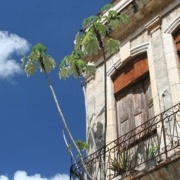The Spanish Speaking World Celebrates Lent
Enough Lent for the Season
We are reaching that time of the year where the Sun is fighting to stay out and you start to feel the change in the air; that smell of nature, the smell of trees, grass and blooming flowers. We are reaching the time where the day is longer and the great City of New York finds more excuses to stay out with him, the sun. Luckily, we are also grasping the end of Lent, that period before Easter that, in the Christian Church, is the commemoration of Christ’s fasting in the wilderness during forty days.
Some time ago, in Catholic countries like, Colombia, Mexico and even Ukraine, it was quite common to devote this period to abstinence, also known as no parties, no alcohol (other than wine), no candies for kids and some other restrictions during forty days, enough time to start considering Easter as your new favorite holiday.
But what if I told you that Lent actually goes beyond Holy Saturday. The word comes from Lencten, which in old English meant Spring and was related to the word Long, as a Germanic reference made to the lengthening of the day in Spring. This happens because the sun is upon the Ecuadorian line during the time of March the 20th and again on September 22nd, and the day is relatively as long as the night. In latin, this phenomenon was called Aequinoctium, that gave us the word Equinox in English and Equinoccio in Spanish, made by Equi from Aequus (equal, the same) and Nox from Noctis (Night).
For the Romans, however, the time that started with the first equinox was called Veris, which was the longest time of the year. They must have though that this period was too long to have only one name because, eventually, they started calling the beginning of this time, by March 20th Primo Vere and later Prima Vera, which means “First Summer”. Then, came the Veranum Tempus that means “Time of Summer”, and finally came the harvest season, which they called Autumnus, from Auctus (to grow, increase). As you can see, it was actually the union of three of our seasons: Spring, Summer and Autumn, only the latter keeping its shape directly from latin, though. But in Spanish they are almost intact; Spring, which is the first summer, is called Primavera, Summer is called Verano and finally, the time of harvest is called Otoño which sounds very close to Autumnio.
Thus, as the story of languages shows, Lent is going beyond Easter, we are still figuring out how it became Spring at the end, but thank God is just the shape of the word through the years and not synonym of abstinence. Imagine an abstinence season in NYC?
[/vc_column_text][/vc_column][/vc_row]










